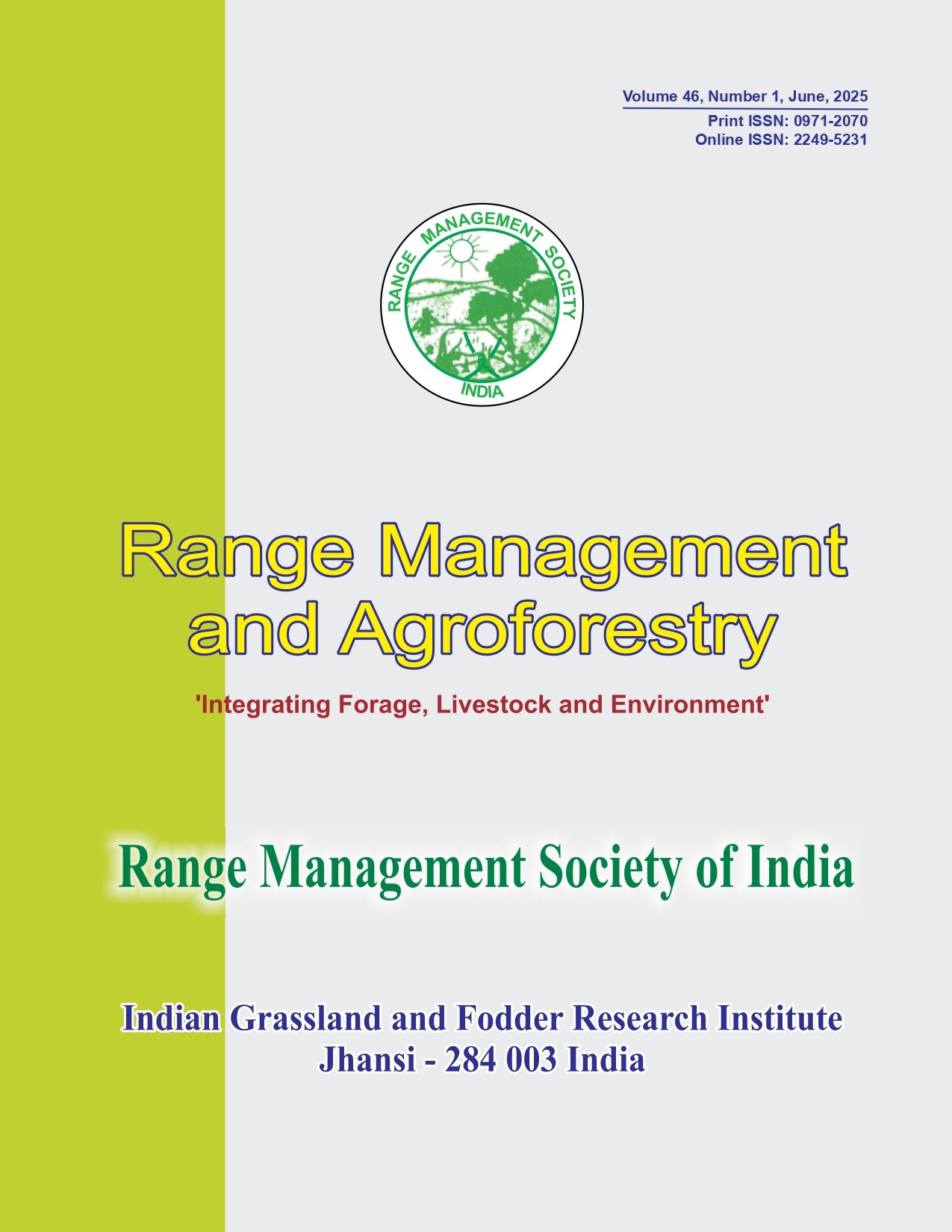Genetic diversity based on multivariate analyses for breeding strategies in Trifolium
Keywords:
Cluster analysis, Genetic diversity, PCA, Powdery mildew, TrifoliumAbstract
Data on eighteen agro-morphological traits were recorded in twenty-five genotypes of Trifolium belonging to seventeen species and were analyzed using Mahalanobis D2 statistics and Principal Component Analysis (PCA) for precise grouping. Wide range of genetic diversity was observed within and between species of Trifolium for agro-morphological traits studied. Internode length, leaves per plant and green fodder yield per plant contributed maximum towards the genetic divergence. Cluster analysis based on Tocher’s method, categorized the cultivars into five groups. Based on PCA, the first five components explained over 88% of total variation. Scatter plot using first two components also confirm the grouping done by cluster analysis. T. pratense, T. ambiguum, T. lappaceum can be used as donor for genetic up gradation of T. alexendrinum. T. compestre and T. resupinatum (shaftal) were found more diverse and hence chances of making successful interspecific hybrids are less.




